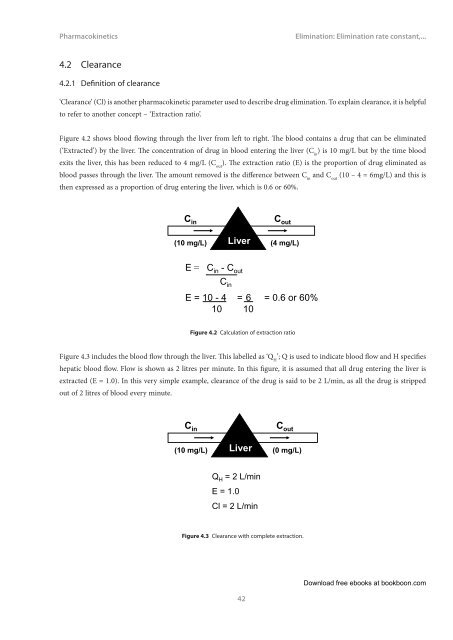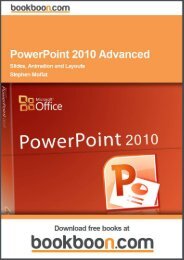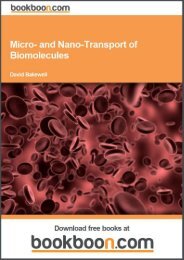Pharmacokinetics Language English Format: PDF Price - Tutorsindia
Pharmacokinetics Language English Format: PDF Price - Tutorsindia
Pharmacokinetics Language English Format: PDF Price - Tutorsindia
- No tags were found...
Create successful ePaper yourself
Turn your PDF publications into a flip-book with our unique Google optimized e-Paper software.
<strong>Pharmacokinetics</strong>Elimination: Elimination rate constant,...4.2 Clearance4.2.1 Definition of clearance‘Clearance’ (Cl) is another pharmacokinetic parameter used to describe drug elimination. To explain clearance, it is helpfulto refer to another concept – ‘Extraction ratio’.Figure 4.2 shows blood flowing through the liver from left to right. The blood contains a drug that can be eliminated(‘Extracted’) by the liver. The concentration of drug in blood entering the liver (C in) is 10 mg/L but by the time bloodexits the liver, this has been reduced to 4 mg/L (C out). The extraction ratio (E) is the proportion of drug eliminated asblood passes through the liver. The amount removed is the difference between C inand C out(10 – 4 = 6mg/L) and this isthen expressed as a proportion of drug entering the liver, which is 0.6 or 60%.C inC outLiver(10 mg/L) (4 mg/L)E =C in - C outC inE = 10 - 4 = 6 = 0.6 or 60%10 10Figure 4.2 Calculation of extraction ratioFigure 4.3 includes the blood flow through the liver. This labelled as ‘Q H’; Q is used to indicate blood flow and H specifieshepatic blood flow. Flow is shown as 2 litres per minute. In this figure, it is assumed that all drug entering the liver isextracted (E = 1.0). In this very simple example, clearance of the drug is said to be 2 L/min, as all the drug is strippedout of 2 litres of blood every minute.C inC outLiver(10 mg/L) (0 mg/L)Q H = 2 L/minE = 1.0Cl = 2 L/minFigure 4.3 Clearance with complete extraction.42Download free ebooks at bookboon.com
















